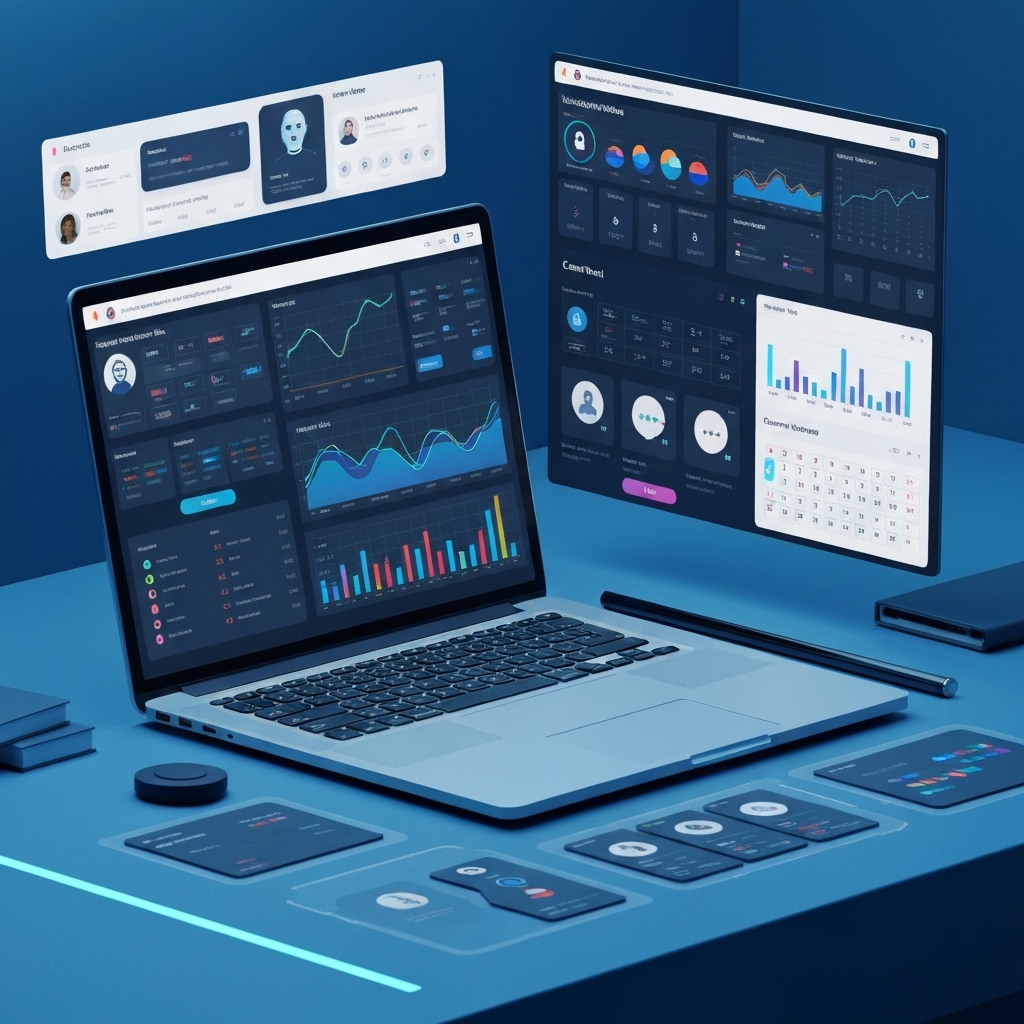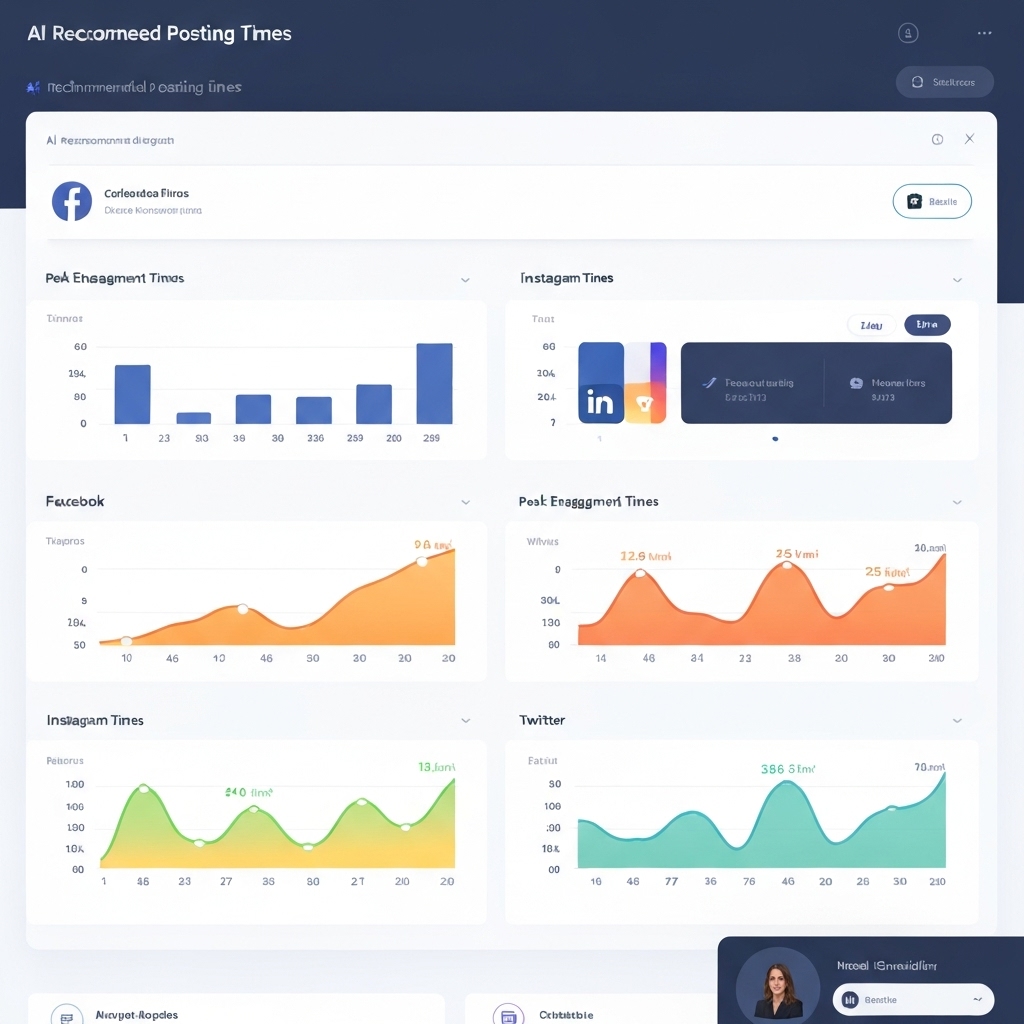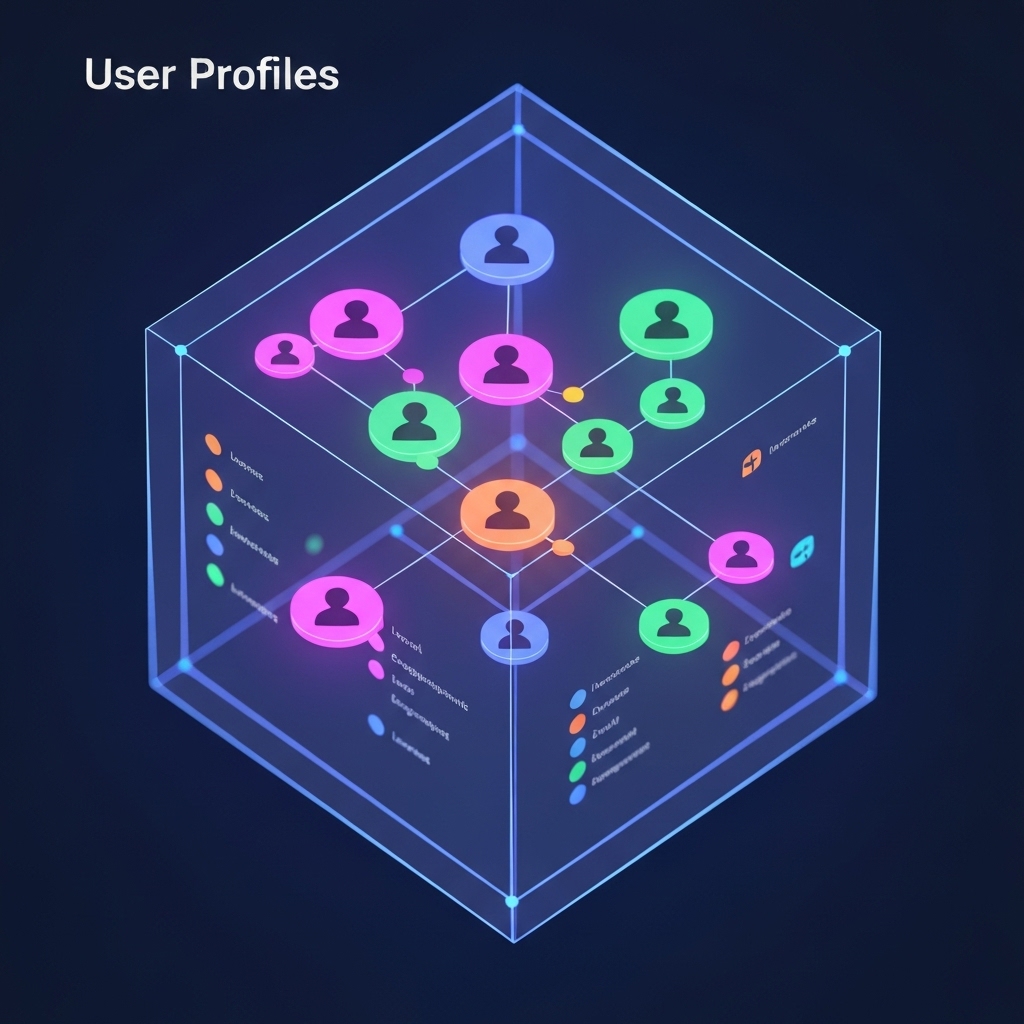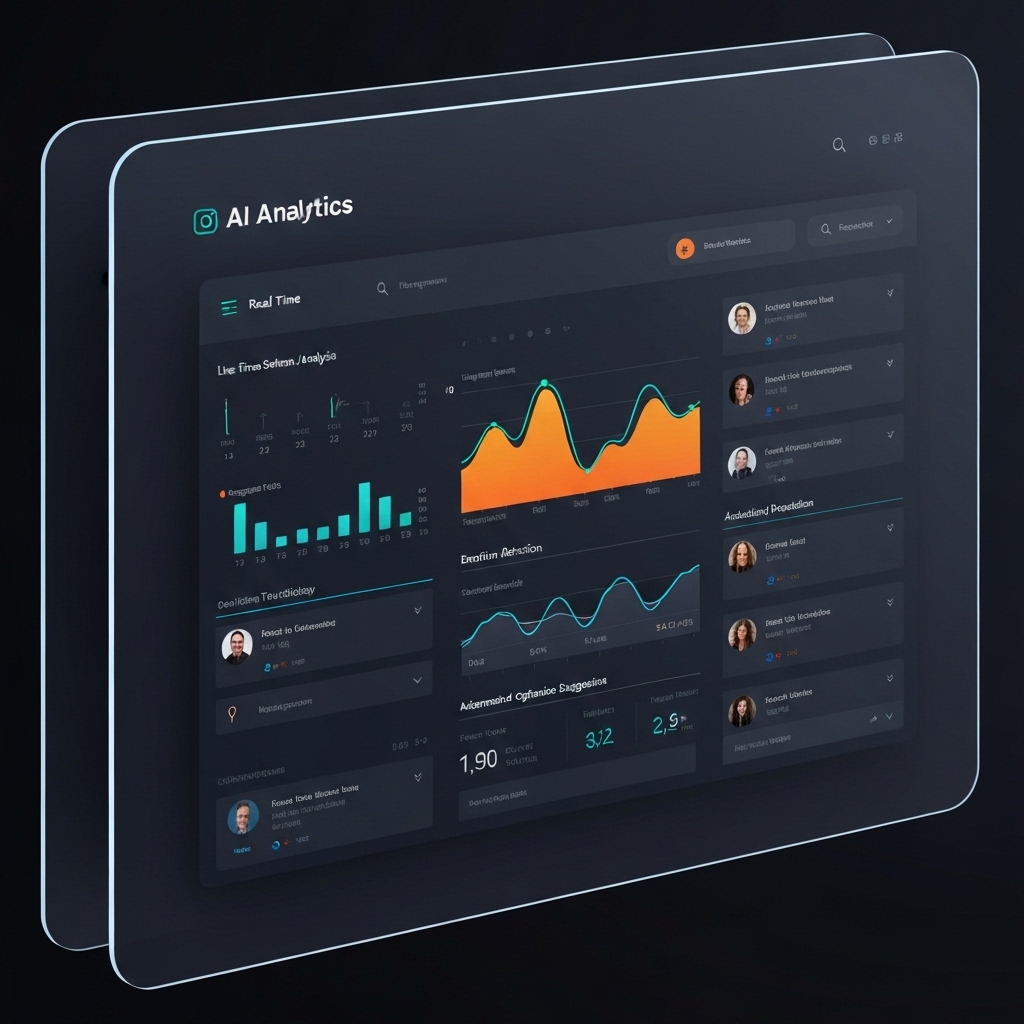How to Use AI for Social Media Content: A Practical Guide for Modern Marketers
How to Use AI for Social Media Content: A Practical Guide for Modern Marketers
Artificial intelligence is transforming the way brands approach social media marketing, enabling teams to streamline content creation and maximize audience engagement with unprecedented precision. AI-powered tools can generate compelling captions, suggest optimal posting times, and even design visuals tailored to specific platforms like Instagram, LinkedIn, or TikTok. By automating repetitive tasks, marketers gain more time to focus on strategy and creativity—two elements that remain essential in building authentic connections. According to Social Media Today, businesses using AI-driven content tools report up to a 40% increase in engagement rates over traditional methods.
Beyond content creation, AI excels at analyzing vast amounts of user data to uncover insights about audience preferences, sentiment, and behavior. Machine learning algorithms can detect patterns in engagement trends, helping marketers refine their messaging and target the right demographics with pinpoint accuracy. Platforms like Hootsuite and Sprout Social integrate AI analytics to deliver real-time performance reports and predictive recommendations. As highlighted by Hootsuite’s 2025 Social Trends Report, brands leveraging AI for audience analysis are twice as likely to outperform competitors in campaign ROI.
Another game-changing benefit of AI in social media is its ability to personalize content at scale. Dynamic content adaptation ensures that users receive posts, ads, and messages that resonate with their interests and past interactions. This level of personalization not only boosts engagement but also fosters brand loyalty. For instance, HubSpot notes that personalized social content can increase click-through rates by as much as 50%, proving that relevance drives results in today’s crowded digital space.
As AI technology continues to evolve, early adopters in the marketing space stand to gain a significant competitive edge. From improving efficiency to deepening customer relationships, the strategic integration of AI into social media workflows is no longer optional—it's essential. Marketers who embrace these tools responsibly and creatively will be best positioned to thrive in an increasingly automated world. For further reading on ethical AI use in marketing, visit Content Marketing Institute.
Understanding AI in Social Media Marketing
Artificial Intelligence (AI) is transforming the landscape of social media marketing by enabling businesses to operate with unprecedented efficiency and precision. By leveraging machine learning algorithms, AI can analyze vast amounts of user data to identify trends, predict behavior, and deliver highly targeted content. This capability allows marketers to craft campaigns that resonate deeply with their audiences, increasing engagement and conversion rates. Platforms like Facebook and Instagram already use AI to optimize ad delivery, ensuring that content reaches the most relevant users based on their interests and online activities. For more on how AI shapes digital advertising, visit Social Media Examiner.
One of the most impactful applications of AI in social media is content personalization. AI-driven tools analyze user interactions in real time—such as likes, shares, and comments—to tailor content feeds and recommendations. This level of customization enhances user experience while boosting brand loyalty and retention. Additionally, chatbots powered by natural language processing (NLP) provide instant customer support, answering queries and guiding users through purchasing journeys without human intervention. According to research from MarketingProfs, companies using AI for personalization report up to a 20% increase in sales.
AI also plays a crucial role in sentiment analysis, helping brands monitor public perception across social platforms. By scanning text for emotional tone and context, AI tools can alert marketers to potential PR crises or highlight positive feedback for strategic amplification. This real-time insight supports agile decision-making and proactive reputation management. As AI continues to evolve, its integration into social media strategies will become not just advantageous but essential for staying competitive. Explore the latest developments at TechRadar Pro AI.

Generating Engaging Content with AI
AI-powered content generation is transforming the way brands approach social media and digital marketing. With advanced generative text models, marketers can now produce high-quality captions, hashtags, and video scripts in a fraction of the time it would take manually. These tools analyze inputted keywords or brief descriptions and generate multiple creative variations that align with a brand's unique voice and tone—making content creation faster, more efficient, and scalable. Platforms like OpenAI have pioneered models such as GPT that power many of these innovative solutions.
One major advantage of using AI for content is its ability to maintain consistency across campaigns while adapting to different platforms—from Instagram to TikTok to LinkedIn. Whether you're launching a new product or running a seasonal promotion, AI can tailor messaging to resonate with your target audience, increasing engagement and reach. According to research by McKinsey & Company, organizations leveraging AI in marketing report significant improvements in customer satisfaction and operational efficiency.
Beyond speed and consistency, AI-generated content helps overcome creative blocks by offering fresh perspectives and ideas. Marketers can experiment with different tones, styles, and formats without starting from scratch, empowering teams to focus on strategy and storytelling. As these tools continue to evolve, their integration into daily workflows becomes not just a convenience, but a competitive advantage in the fast-paced digital landscape.
AI-powered design platforms are revolutionizing the way visual content is created, offering intuitive suggestions for layouts, color palettes, and typography tailored to specific audiences and platforms. By analyzing vast datasets of design trends and user engagement metrics, these tools empower creators to produce professional-grade visuals without needing a background in graphic design. For small businesses and independent creators, this means access to high-impact design that was once only achievable with a dedicated design team.
These platforms use machine learning to understand what resonates with different demographics, ensuring that suggested designs align with audience preferences across channels like social media, websites, or email campaigns. Whether it's choosing a bold font for Instagram stories or a minimalist layout for a LinkedIn post, AI helps maintain brand consistency while optimizing for engagement. Tools like Canva and Adobe Express integrate AI to streamline the creative process, making design more accessible than ever.
For solo entrepreneurs and small teams operating with limited resources, the time and cost savings are significant. Instead of outsourcing design work or spending hours experimenting with templates, users can generate polished visuals in minutes. This efficiency allows them to focus more on strategy and content quality, which are crucial for building audience trust and driving conversions.
As AI continues to evolve, its role in design will likely expand to include real-time performance feedback and adaptive content that changes based on user interaction. Embracing these tools now gives creators a competitive edge, helping them produce visually compelling content at scale. For those looking to stay ahead, integrating AI-driven design into their workflow is no longer just an option—it's a strategic advantage. Learn more about design innovation at Canva Design School.
Optimizing Posting Times and Scheduling
AI-powered tools are revolutionizing the way brands approach social media scheduling by leveraging historical engagement data to pinpoint the most effective posting times. By analyzing patterns in user activity, such as when followers are most likely to like, comment, or share content, these algorithms dramatically increase the chances of visibility and interaction. Platforms like Hootsuite and Buffer use machine learning models that continuously adapt to shifting audience behaviors, ensuring your messages reach the right people at the right moment.
This data-driven approach removes the guesswork from content distribution, allowing marketers to focus on creativity while automation handles timing. For instance, Sprout Social’s predictive analytics can identify not only optimal hours but also which types of content perform best during those windows. According to research cited by Sprout Social, accounts using smart scheduling see up to 35% higher engagement compared to those posting manually without insights.
Moreover, these AI recommendations are especially valuable for businesses targeting global audiences across multiple time zones. Instead of relying on broad assumptions, companies can deploy region-specific posting strategies that align with local peak usage times. This precision leads to more consistent engagement and strengthens brand presence over time.
As competition for attention on social platforms intensifies, leveraging AI for scheduling isn’t just a convenience—it’s a strategic advantage. Brands that adopt these intelligent tools position themselves to maximize ROI from their content efforts, staying ahead in an algorithm-driven digital landscape.

Enhancing Audience Insights and Personalization
Artificial intelligence is transforming the way marketers understand and engage with their audiences by rapidly analyzing vast amounts of behavioral data. By identifying patterns in user interactions, AI enables businesses to segment their audiences with remarkable precision, ensuring that messaging is tailored to the unique preferences and needs of different customer groups. This level of insight allows for more strategic decision-making and drives higher engagement across digital platforms. Organizations leveraging AI-powered analytics tools gain a competitive edge by responding swiftly to shifting consumer behaviors.
One of the most powerful applications of AI in marketing is its ability to predict future trends based on historical and real-time data. Machine learning models can forecast purchasing behavior, content preferences, and even churn risk, allowing marketers to proactively adjust their strategies. For instance, platforms like Google Analytics now integrate AI-driven insights to help businesses anticipate user actions and optimize campaigns accordingly. These predictive capabilities minimize guesswork and maximize return on investment.
Personalization powered by AI goes beyond simple name insertions in emails—it involves delivering dynamic content that resonates deeply with individual users. From product recommendations on e-commerce sites to curated news feeds, AI ensures that users receive relevant experiences at scale. According to research from McKinsey & Company, personalization can deliver five to eight times the ROI on marketing spend and lift sales by 10% or more.
Additionally, AI-driven chatbots equipped with natural language processing (NLP) are redefining customer service by enabling 24/7 real-time interactions. These intelligent assistants handle inquiries, guide users through purchases, and resolve issues efficiently, significantly improving response times and customer satisfaction. Companies using conversational AI report reduced operational costs and increased conversion rates, making chatbots a vital component of modern digital strategies. For further reading on NLP advancements, visit IBM Watson.

Monitoring Performance and Adjusting Strategies
AI-driven analytics are transforming the way marketers understand and optimize their campaigns. By leveraging real-time data, professionals can monitor key performance indicators like sentiment analysis, click-through rates, and share velocity with unprecedented precision. This level of insight enables rapid, informed decisions that keep marketing strategies aligned with audience behavior. Platforms such as Google Analytics now integrate machine learning to surface actionable trends, making it easier to identify what resonates with target audiences.
What sets AI apart is its ability to go beyond reporting—offering prescriptive recommendations that enhance campaign effectiveness. For example, if a social media post shows low engagement, AI tools can suggest revised captions, optimal posting times, or alternative imagery based on historical performance data. These intelligent suggestions reduce guesswork and empower marketers to refine content dynamically. According to research by McKinsey & Company, organizations using AI for marketing see a 10–20% increase in return on investment due to improved targeting and personalization.
The agility provided by AI allows teams to pivot quickly in fast-moving digital environments. Instead of waiting for end-of-campaign reports, marketers receive continuous feedback loops that support ongoing optimization. This responsiveness not only improves performance but also enhances customer experiences by delivering more relevant content. As AI models grow more sophisticated, their role in shaping data-driven creative decisions will become indispensable across industries.

Conclusion: Embracing AI for Smarter Social Media
Artificial intelligence has transitioned from a speculative technology to an essential asset in modern marketing. Today’s digital landscape demands speed, precision, and personalization—qualities that AI excels at delivering. By leveraging AI-powered tools, marketers can analyze vast amounts of social media data in real time, identify emerging trends, and tailor content to audience preferences with remarkable accuracy. This shift isn’t about replacing human creativity; it’s about enhancing it. Platforms like HubSpot offer AI features that help craft compelling copy, optimize posting schedules, and even predict engagement patterns.
Integrating AI into your social media workflow doesn’t require a complete overhaul. Start by adopting trusted tools that align with your current strategy—such as using AI for sentiment analysis or automating routine responses. These small steps can significantly boost efficiency while freeing up time for higher-level creative thinking. For instance, tools like Buffer use AI to suggest optimal posting times and generate content ideas based on performance history, making day-to-day management more effective.
As you grow more comfortable, expand your use of AI to personalize customer experiences at scale. Dynamic content customization, chatbots for instant engagement, and predictive analytics for campaign refinement are all within reach. The key is continuous experimentation and learning. According to research from McKinsey, companies embracing AI in marketing report higher customer satisfaction and increased ROI. Those who wait risk falling behind in an increasingly competitive digital space.
The future of marketing belongs to those who adapt. By viewing AI as a collaborative partner rather than a disruptive force, marketers can unlock new levels of innovation and connection. Begin with manageable implementations, measure results diligently, and gradually scale your AI initiatives. With the right approach, AI becomes not just a tool for efficiency—but a catalyst for deeper audience engagement and long-term brand success.
